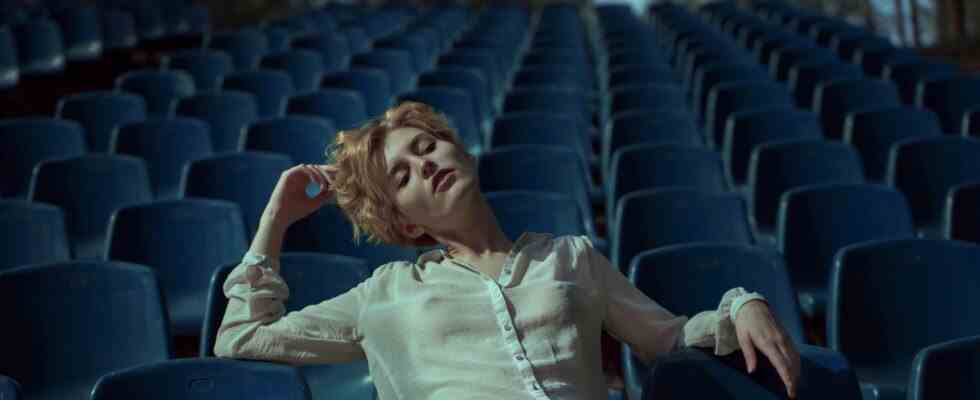Female breasts come in a wide variety of sizes, shapes and forms. The same goes for the nipples as well. STYLEBOOK has examined the nine most common nipple types for you.
function of the nipple
The main purpose of the female nipple is to enable newborns and infants to suck up breast milk. In men, it does not fulfill any special function, but is a developmental leftover.
Definition nipple and areola
The pigmented, round area of skin on the breast is called the areola. The nipple (mammille), also known colloquially as the nipple, is the elevation in the middle of the areola. This is where the 15-20 mammary glands open, through which the milk flows to the outside during breastfeeding. Cold, stimulation, and arousal can cause the wart to harden and become more prominent. This straightening is called an erection of the nipple. By definition, the nipple and the areola together form the nipple.
How is a nipple shaped?
With the variety of different shapes, a woman quickly becomes unsure and forgets that every nipple is unique and different from all the others. However, nine different common types can be identified. In addition, it is quite possible to have a combination of two or more species. Or your own nipples don’t fit into any of these categories – that’s okay too!
This also applies to the colour. They are usually colored pink to brownish, although this can change during pregnancy due to the increasing pigmentation, here too any color is normal. Also, the size and shape of the areola range from small to large and from round to oblong.
Also interesting: Marvel Star Florence Pugh: “Why are you so scared of boobs?”
The 9 different nipple types
1. Protruding nipples
This is probably the most common type. It refers to nipples that rise a few millimeters above the surface in the middle of the areola and point outwards when they are at rest.
2. Flat warts
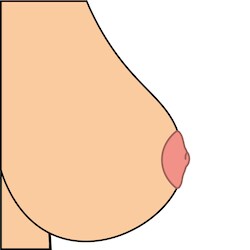
The entire nipple is flat and merges with the areola. Even when it’s cold and excited, it remains almost unchanged.
3. Puffy nipples
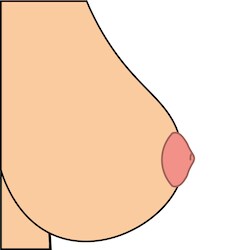
The entire areola and nipple area looks like a small, raised mound on the top of the breast.
4. Inverted nipples
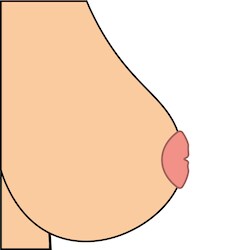
Inverted nipples are permanently retracted, inward-facing nipples. They are caused by shortened milk ducts and, if at all, represent a purely aesthetic problem and are not associated with any medical complications.
Inverted nipples that stand up when stimulated are called “false” inverted nipples. “Real” inverted nipples are the most common form of inverted nipples. They withdraw further when stimulated and are therefore a problem, especially for breastfeeding mothers.
5. Inverted nipples
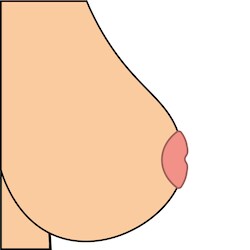
In the case of an inverted nipple, the actual nipple is missing, the areola only has a small depression in the middle. This nipple shape is very rare and is usually associated with shortened milk ducts and reduced breast tissue. The inverted nipple also retracts even more when stimulated, making breastfeeding more difficult.
6. Uneven shape
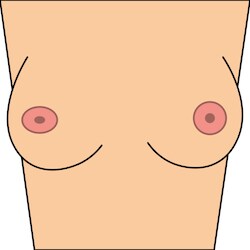
Having two different-looking nipples in shape, color and size is perfectly normal. A one-sided inverted nipple is also completely harmless if this inequality has always been the case. However, if this change occurs suddenly, it can be a sign of a disease and should be clarified by a specialist.
7. Bumps
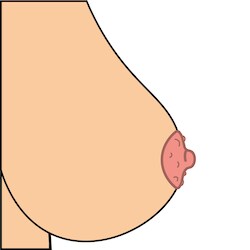
Bumps and small pimples on the areola around the nipple are quite normal and more noticeable in some women than others. These are the so-called Montgomery glands, which secrete sebum and thus protect the nipple from drying out, especially during breastfeeding. They can sometimes look like small blackheads. But don’t push them around. Not only would that be unnecessary and painful, it could also lead to inflammation.
8. Hairiness
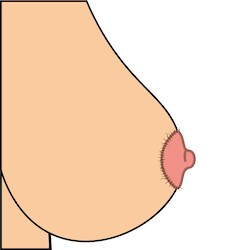
Fine or coarse hairthat grow out of the nipple area are normal. They are hormonal or genetic and can easily be shortened with scissors or plucked out with tweezers.
9. Extra nipple
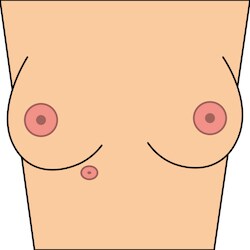
Some people, like Harry Styles, Mark Wahlberg or Lily Allen are said to have an additional, smaller third nipple. They either look like flat moles or have a fully formed, raised bump.
When the nipple hurts
It is not uncommon for breastfeeding mothers to experience pain in their nipples for a variety of reasons such as: B. because of dryness and sores. However, nipple pain or soreness can also occur in non-mums and can be a symptom of PMS, other hormonal changes, or skin irritation, allergies, and friction. If pain persists or you notice blood and discharge, see a specialist.
Also interesting: Flaky and Dry Nipples – Causes and Treatment
Conclusion
As a rule, all characteristics of the nipples are normal and harmless. However, if you notice sudden changes, especially if they are associated with pain, you should consult a gynecologist or dermatologist. Optical changes as well as redness, itching and pain can be a sign of a disease that should be ruled out.
source
– breastfeeding with flat nipples, inverted nipples and inverted nipples, still-lexikon.de

